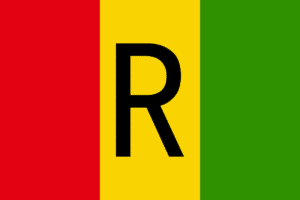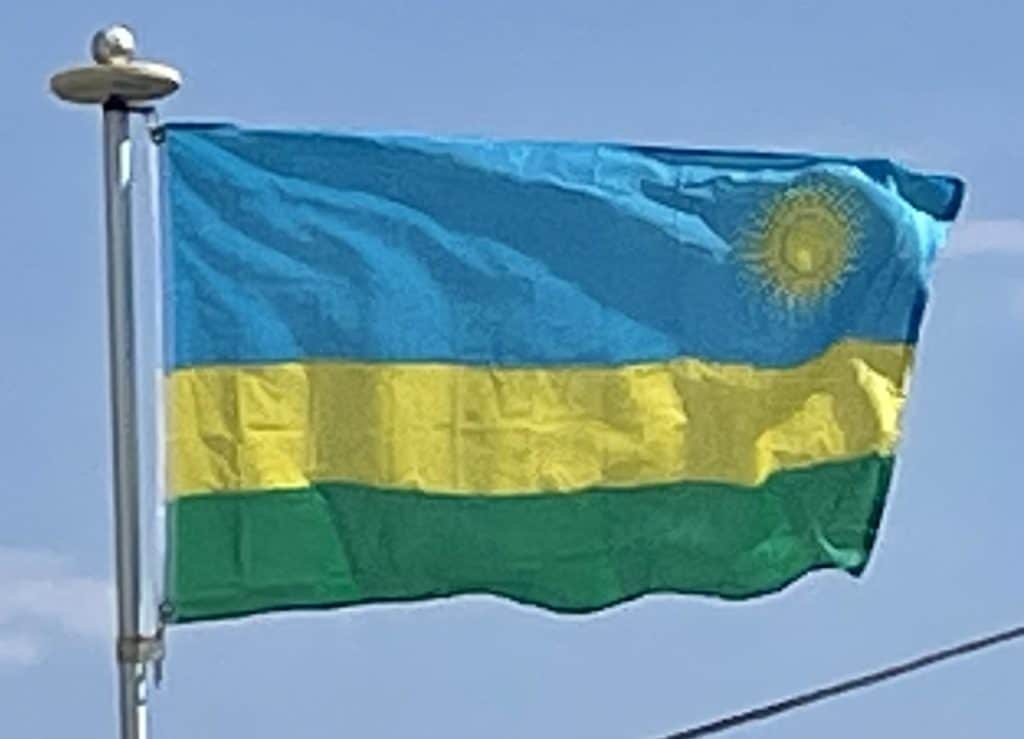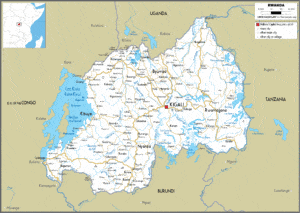
The principal form of public transport in the country is the minibus, accounting for more than half of all passenger carrying capacity. Some minibuses, particularly in Kigali, operate an unscheduled service, under a shared taxi system, while others run to a schedule, offering express routes between the major cities. There are a smaller number of large buses, which operate a scheduled service around the country. The principal private hire vehicle is the motorcycle taxi; in 2013 there were 9,609 registered motorcycle taxis in Rwanda, compared with just 579 taxicabs. Coach services are available to various destinations in neighboring countries. The country has an international airport at Kigali that serves several international destinations, the busiest routes being those to Nairobi and Entebbe; there is one domestic route, between Kigali and Kamembe Airport near Cyangugu.
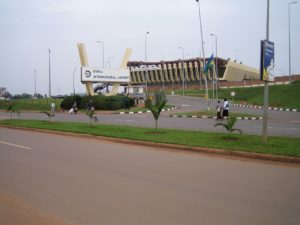
In 2017, construction began on the Bugesera International Airport, to the south of Kigali, which will become the country’s largest when it opens, complementing the existing Kigali airport. The national carrier is RwandAir, and the country is served by seven foreign airlines. As of 2015 the country has no railways, but there is a project underway, in conjunction with Burundi and Tanzania, to extend the Tanzanian Central Line into Rwanda; the three countries have invited expressions of interest from private firms to form a public private partnership for the scheme. There is no public water transport between the port cities on Lake Kivu, although a limited private service exists and the government has initiated a program to develop a full service. The Ministry of Infrastructure is also investigating the feasibility of linking Rwanda to Lake Victoria via shipping on the Akagera River.
Flag of Rwanda:
The flag of Rwanda was adopted on October 25, 2001.
The flag has three colors: blue, green and yellow. The blue band represents happiness and peace, the yellow band symbolizes economic development, and the green band symbolizes the hope of prosperity. The yellow sun represents enlightenment.
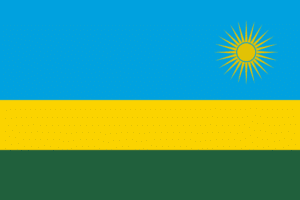
The new flag represents national unity, respect for work, heroism, and confidence in the future. It was adopted to avoid connotations to the 1994 genocide. The flag was designed by Alphonse Kirimobenecyo.
Rwanda’s previous flag was a red-yellow-green tricolor with a large black letter “R” (to distinguish it from the otherwise identical flag of Guinea, with the “R” standing for Rwanda). Derived from the flag of Ethiopia, the colors green, yellow, and red represented peace, the nation’s hope for its development, and the people. The colors were associated with Pan-African colors. The flag was changed because it became associated with the brutality of the 1994 genocide.
